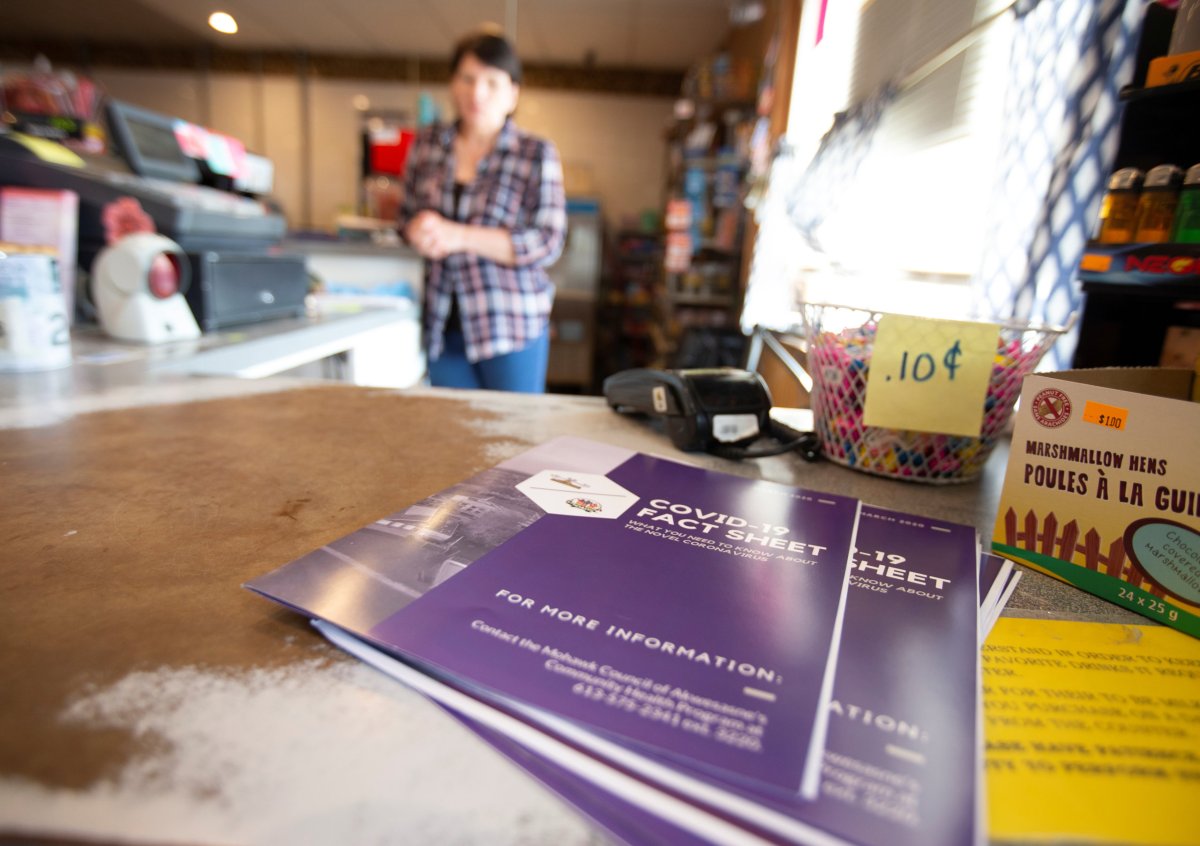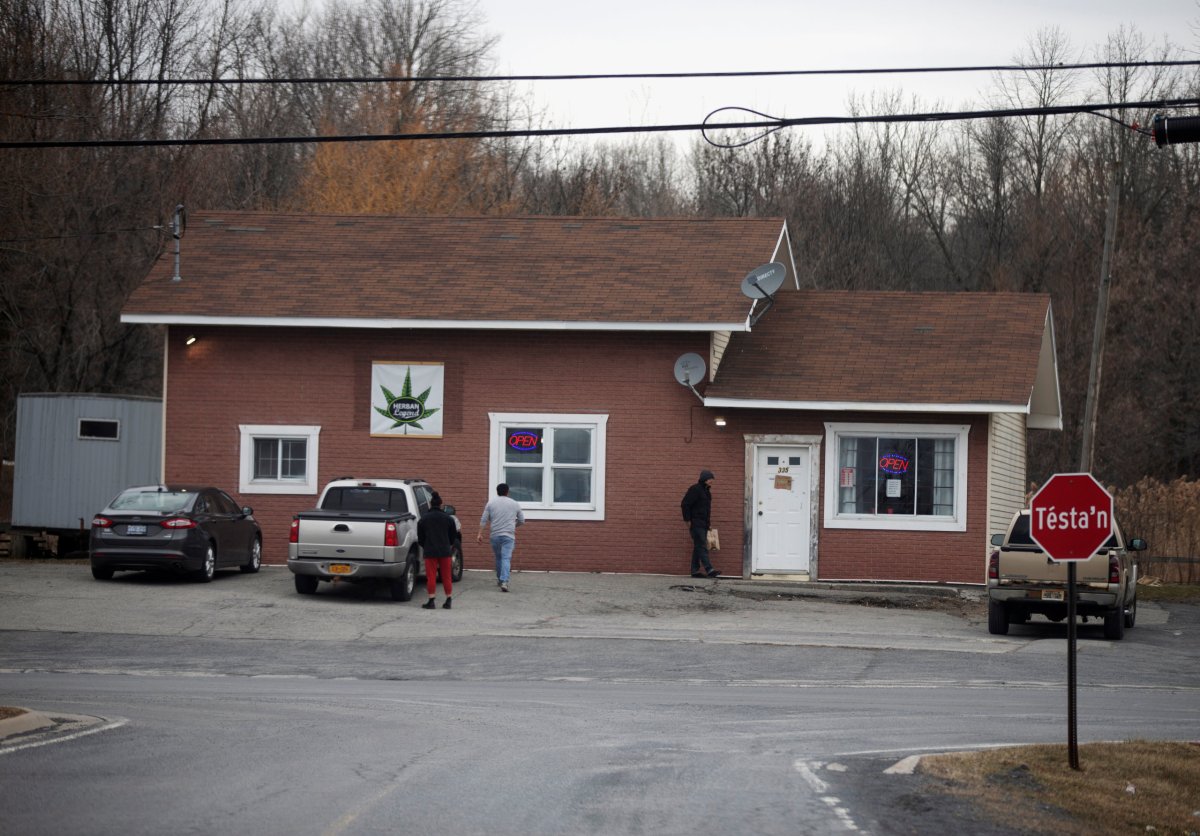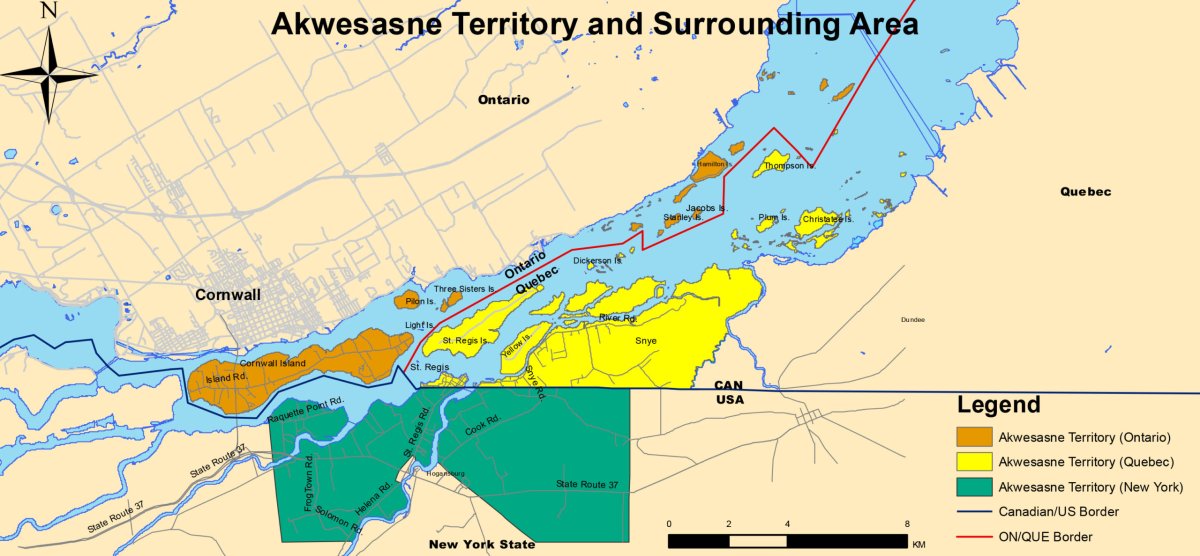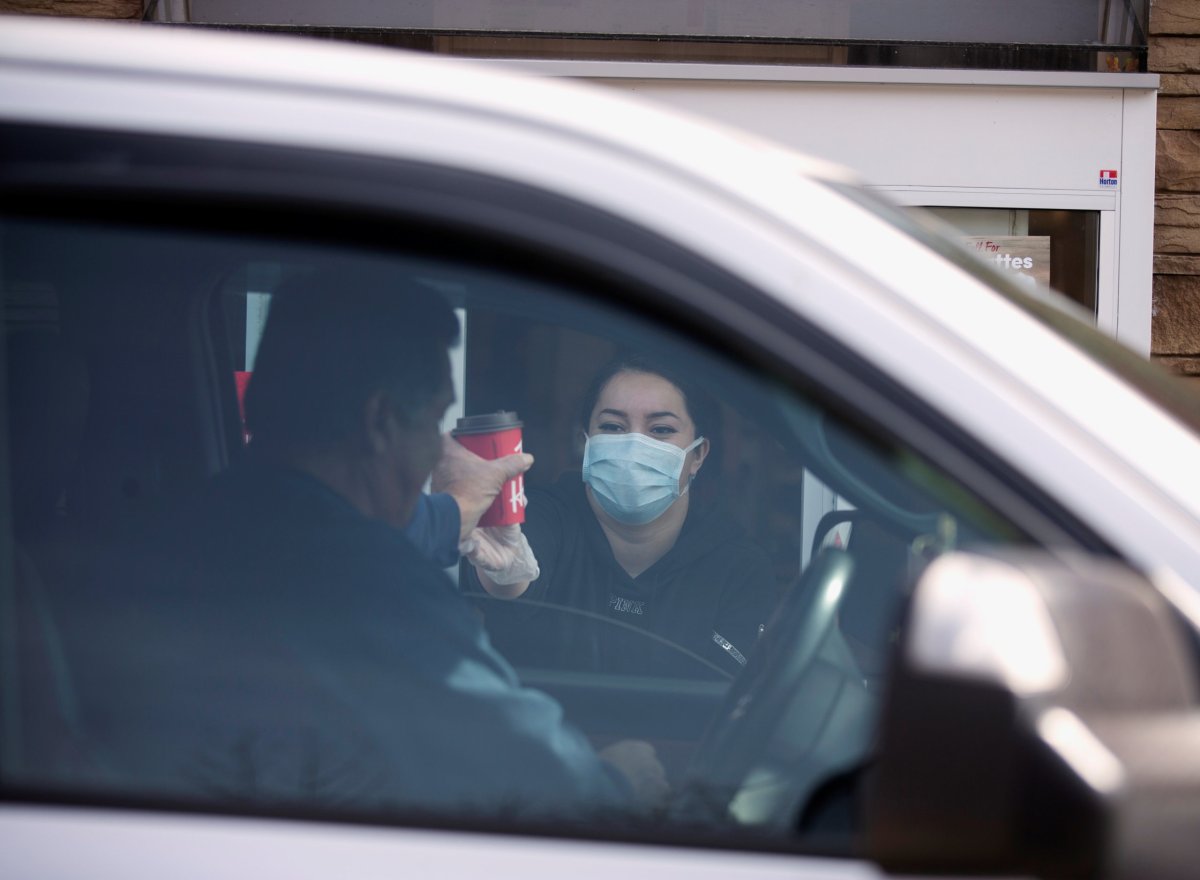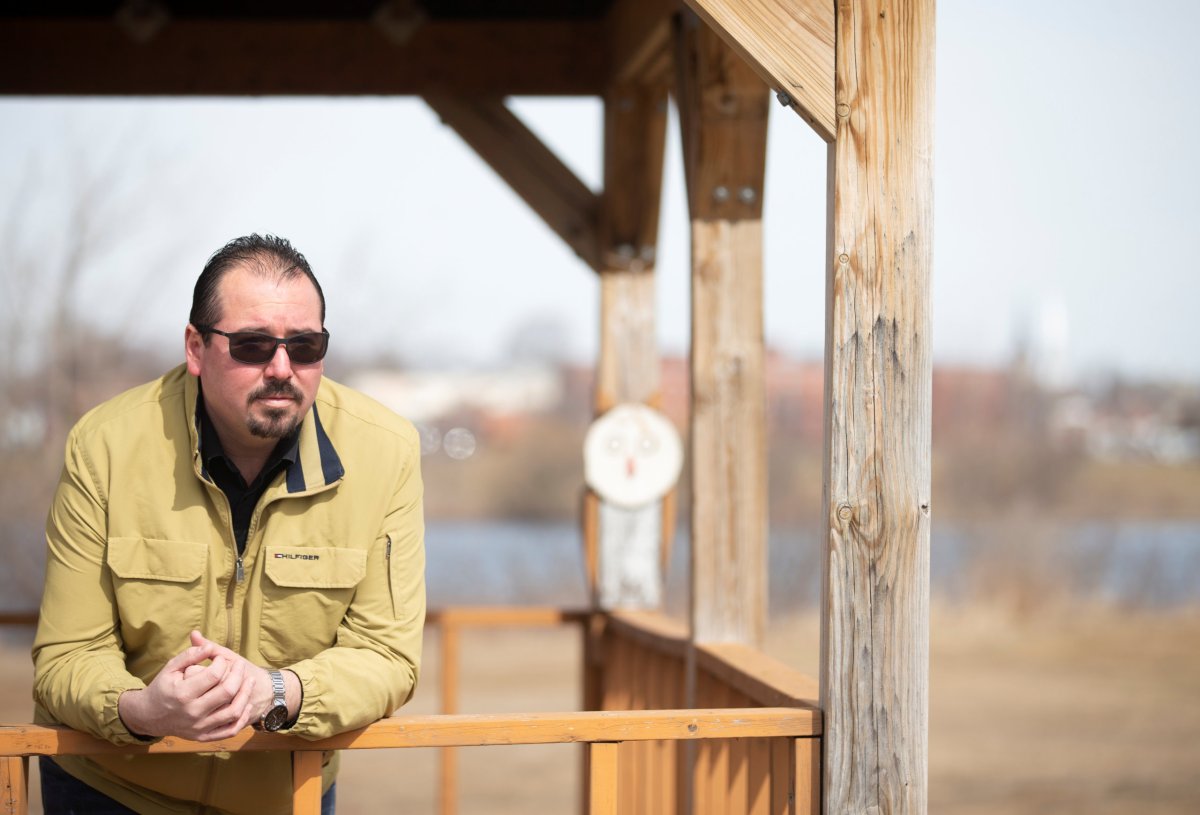CORNWALL ISLAND, Ontario (Reuters) – Canada and the United States have closed their border to non-essential traffic to limit the spread of the new coronavirus, but one rural corner of the vast frontier remains open: an indigenous territory that straddles the two countries.
The Akwesasne Mohawk go to the supermarket in Cornwall, Ontario. Nurses from Massena, New York, work at the Akwesasne health facility in Quebec whose parking lot is in New York. The three communities, minutes apart by car, have historic economic and social ties.
Canadians returning from the United States must quarantine for two weeks, but many of the 12,000 Canada-based Akwesasne go back and forth every day, sometimes several times. Instead, the Mohawk Council asks that they quarantine if they come back from a distance of more than 50 miles (80 km).
“It’s not possible for that border to be closed to our people simply because there’s no way to get access to the essential services that we need,” Grand Chief Abram Benedict told Reuters on a gray spring day on Cornwall Island in the middle of the St. Lawrence River, which is part of the Akwesasne territory in Canada.
Benedict drives 17 minutes to his office every morning from his home on Cornwall Island, passing over a bridge and into the United States, and then loops back into Canada to his office in Quebec.
Paul Roumeliotis, the chief medical officer for the Canadian region that includes Cornwall and the Canadian portion of the Akwesasne community, acknowledged the area’s jurisdictional challenges but said what was important was that people on both sides of the border take precautionary measures against the virus.
“Borders don’t matter to viruses,” Roumeliotis said.
The Mohawk Council and local mayors are telling people returning from spring break to quarantine and are urging physical distancing, but the message is taking hold slowly.
Putting tape on the floor to help with social distancing is “scaring people. It’s a precaution for something that none of us have seen,” said Travis Goff, 25, a budtender at a pot shop on the island, one of a handful of businesses still operating.
At a pharmacy in Cornwall, which has almost 50,000 residents, people strolled the aisles side by side and walked straight into others coming from the opposite direction. At a gas station on the border road, Scott, who declined to give his last name, accepted cash with no gloves.
“I’m not worried about it. If it’s gonna to hit us, it’s gonna hit us,” he quipped.
‘ALL COLLECTIVELY WORRIED’
In the past week, the cases around Cornwall more than doubled to nine from four, and those in St. Lawrence County, New York, where Massena is located, shot to 30 from one. Over the weekend, the Akwesasne identified their first case on Cornwall Island, a university student.
Hard-hit New York City is a six-hour drive from the Cornwall area, and the state of New York has reported almost 84,000 cases. Nearby Quebec is the hardest-hit province in Canada, with 4,600 cases.
“We are all collectively worried,” Benedict said.
“We want more people to be staying at home, and we’re not sure that everybody’s doing that yet,” Cornwall Mayor Bernadette Clement told Reuters in an interview in front of City Hall as a steady stream of cars passed.
“If you were to ask most people who live in Massena, Akwesasne or Cornwall, they would tell you that for us the border is just a line,” said Tim Currier, mayor of Massena, which has a population of 12,000.
“The virus is here, there’s no question. That’s why it’s important to take the safety precautions.”
(Reporting by Steve Scherer; Editing by Peter Cooney)

